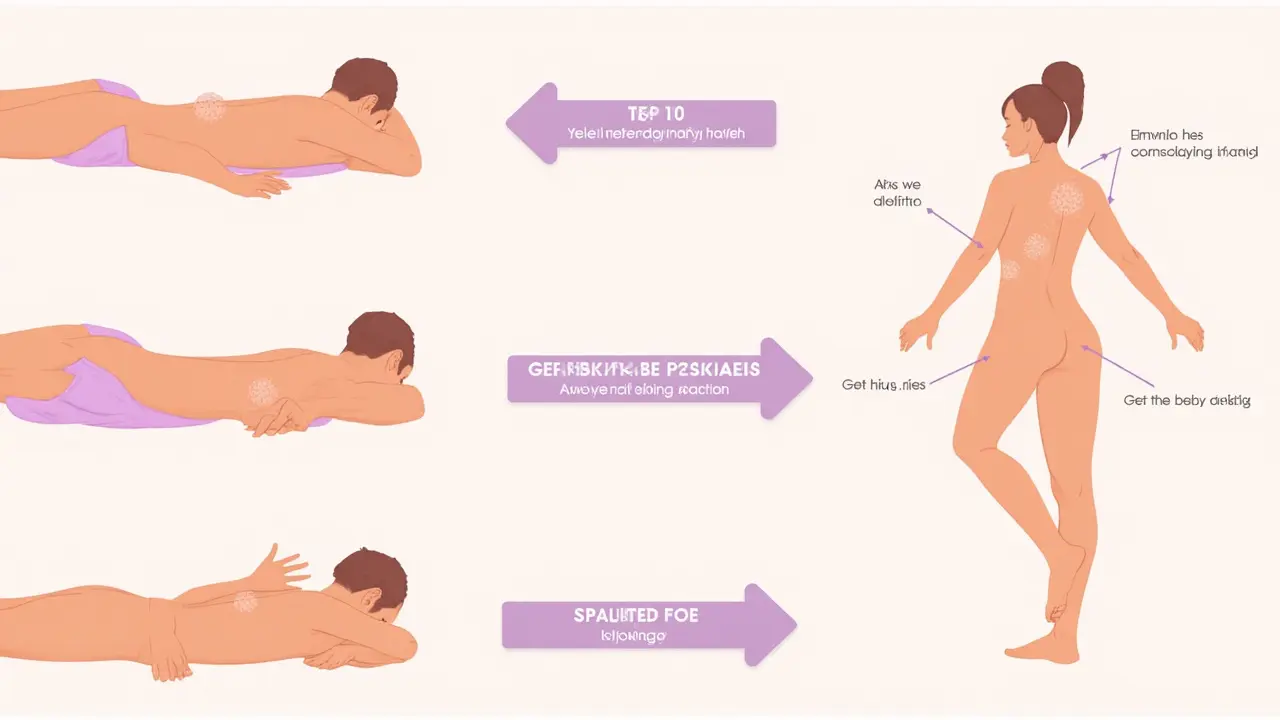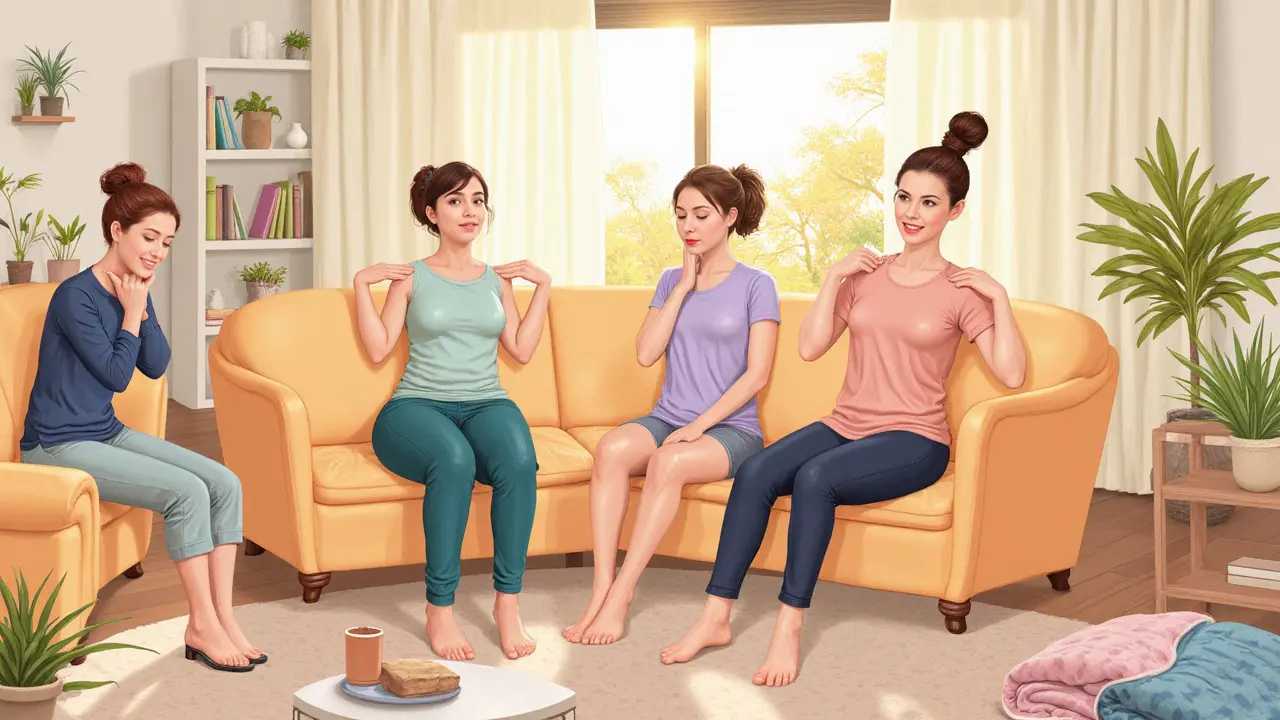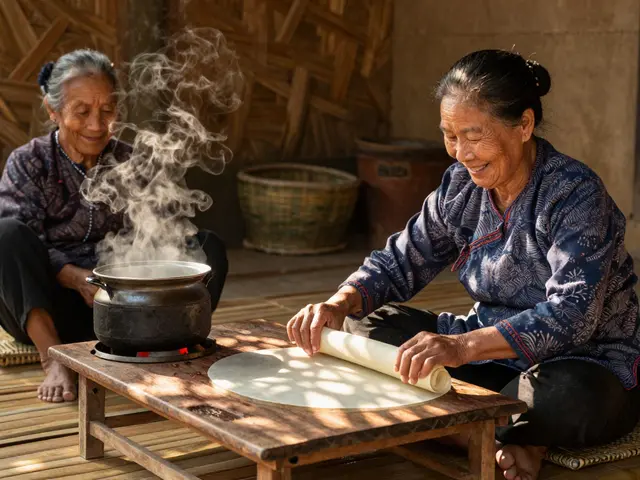Ever tried rubbing your sore shoulders after a long day and wondered if you’re doing it right? You’re not alone. A lot of us don’t realize that tiny changes in our touch can totally transform a massage from ‘meh’ to amazing. What’s wild is, you don’t have to be a pro to help someone feel better—or even do it yourself.
Let’s be real: most people are either too gentle or way too rough. Getting the pressure just right changes everything. Aim for “good pain”—like when stretching feels tough but satisfying. This helps muscles let go of tension instead of clamming up.
Even simple moves, like gentle kneading or slow strokes with your thumbs, work wonders. The goal isn’t to show off; it’s to melt aches and stress. Stick to movements that feel natural and comfortable. The best part? You can start trying these out right away, no fancy tools needed, and you’ll notice relief almost immediately.
- Why Body Massage Actually Works
- Basic Moves Anyone Can Master
- Targeting Trouble Spots: Neck, Back, and Shoulders
- How to Nail Self-Massage
- Tips for a Way Better Massage Experience
Why Body Massage Actually Works
There’s real science behind why a body massage leaves you feeling lighter and looser. When you press and rub muscles, you’re actually pushing more blood through them. More blood flow means more oxygen and nutrients, and that’s exactly what sore muscles need to recover faster.
Massage also lowers those stress chemicals racing through your body, like cortisol. That’s not just feel-good talk—there’s actual research showing regular massage can lower anxiety by nearly 30%. And if you ever notice your heart rate slowing down after a solid massage, that’s not a coincidence. It’s the body’s way of shifting into chill mode—your “rest and digest” system kicks in.
Not convinced yet? Check out this quick snapshot of what massage does, according to studies:
| Effect | What Actually Happens |
|---|---|
| Reduces Muscle Tension | Decreases muscle tightness by boosting circulation and breaking up knots |
| Lowers Stress | Drops cortisol levels; boosts feel-good chemicals like serotonin |
| Speeds Up Recovery | Improves delivery of nutrients for quicker healing |
| Improves Flexibility | Loosens tissues so you move easier |
Even the simple act of touch releases oxytocin—that’s the hormone that makes you feel connected and safe. This is why a decent back rub can calm you faster than most stress hacks. Plus, if you deal with headaches or sore jaws from clenching, massage can help by literally telling tight muscles to chill out.
So next time you think a massage is just a treat, remember: there’s a pile of proof showing it resets your whole system, not just your muscles. If you want to feel better head to toe, this is the real deal.
Basic Moves Anyone Can Master
If you think you need loads of training to give a great body massage, think again. The basic moves are actually super easy and you can use them right away. These moves are used by most massage therapists, even in fancy spas, because they just work. The secret? Consistency and knowing where to apply each move.
Here’s a quick rundown of the essentials:
- Effleurage (Gliding Strokes): This is just smooth, light to moderate pressure strokes done with your palms or fingers. It helps warm up the muscles and gets blood flowing. Start every massage with this to signal that it’s time to relax.
- Petrissage (Kneading): Think of kneading dough. Grab and gently squeeze muscles with your whole hand or thumbs, using a rolling motion. This breaks up tension and is awesome for shoulders and thighs.
- Circular Motions: Use your fingertips or thumbs to make small, steady circles, especially around tight knots or bony spots. This helps ease muscle knots without putting direct pressure on joints.
- Tapping (Percussion): Lightly tap the muscles with the edges of your hands or cupped hands. This wakes up the area and can boost energy, good for ending a session.
- Compression: Press straight down into the muscle with your palms or fingers, hold for a few seconds, then release. It’s simple but helps get deep tension out, especially on bigger muscles like the back or thighs.
If you ever get confused, remember: start light, sense how the muscle responds, then adjust. You can always go deeper, but you can’t take back being too rough.
Check out this table to keep track of what each move does best:
| Technique | Good For | Where to Use |
|---|---|---|
| Effleurage | Relaxation, warming up muscles | All over |
| Petrissage | Muscle knots, tension relief | Shoulders, arms, thighs |
| Circular Motions | Trigger spots, knots | Neck, shoulder blades, calves |
| Tapping | Stimulation, finishing touch | Back, thighs, arms |
| Compression | Deep tension, blood flow | Back, thighs, big muscle groups |
Once you get the hang of these moves, you can mix and match them to fit what feels best. It’s all about guessing less and feeling more. Trust your hands—they can tell a lot about where tension is hiding.

Targeting Trouble Spots: Neck, Back, and Shoulders
These three areas—neck, back, and shoulders—are the hot spots everyone complains about. Blame it on desk jobs, slouching, phone scrolling, or just plain stress. But you can make a real difference with a few practical body massage tricks.
Let’s start with the neck. Most tension collects right where the base of your skull meets your neck. Use your fingertips or thumbs. Apply gentle pressure in small circles, moving side to side along the top of your shoulders and up toward the base of your skull. Don’t press too hard—being gentle is more effective here. A 2023 study in Journal of Bodywork & Movement Therapies found that five minutes of neck massage lowered perceived muscle pain by over 25%.
Your back, especially between the shoulder blades, is another trouble spot. If you’re working on someone else, use your palms to apply slow, firm strokes from the spine out to the sides. Try the classic ‘open book’ move: place one hand flat, then glide it outward while following up with your other hand. For self-massage on your back, a tennis ball between you and a wall works wonders—just lean and roll until you hit a tender spot.
Shoulders tend to clump up with tension, especially around the trapezius muscle (that’s the one at the top, near your neck). Pinch along the top of the shoulder using your thumb and fingers, then roll and squeeze for a slow count of five. Work your way from the neck out to your shoulder tip.
Want some quick numbers? Check out how common these pesky aches are:
| Area | Percent of Adults Experiencing Regular Pain |
|---|---|
| Neck | 24% |
| Upper Back | 27% |
| Shoulders | 35% |
Making a little time for body massage in these zones really adds up—people report better sleep and fewer headaches after just a week of regular sessions. And you don’t have to go deep either. Even using light to medium pressure with good technique will get those stubborn muscles to chill out.
- Always work with clean hands and, if possible, massage oil or lotion to reduce friction.
- Never press directly on the spine or bones—stick to the sides and muscle tissue.
- Ask yourself or the person you’re helping about pressure—everyone’s comfort level is different.
The real secret is staying consistent. Even a five-minute focused massage a few times a week does more than a random hour-long session every so often. Don’t overthink it—just start small and pay attention to what feels best.
How to Nail Self-Massage
Self-massage isn’t just for when you can’t get to a pro. It’s actually super effective for relaxing sore muscles and kicking stress, especially when you use the right moves. You don’t need any fancy gadgets or oils to help yourself feel better, though a tennis ball, foam roller, or even a simple lotion can make a big difference. Studies show self-massage may even cut muscle soreness by up to 30% after workouts.
If you want actual relief, focus on common tight spots: your neck, shoulders, lower back, forearms, and calves. Here’s how to make self-massage work so you’re not just poking at the pain:
- body massage starts with finding knots (tough, tender areas). Use your fingertips to press in slowly; don’t jab at it. Hold steady pressure for 20-30 seconds, then let go and repeat.
- For neck and shoulders, squeeze the muscle gently between your fingers and thumb. Roll it back and forth, like kneading dough, but stop if you get any zinging pain—never go numb.
- Tired wrists or forearms? Try pressing your thumb in small circles below your palm, or use a tennis ball to roll out tight spots on a table.
- Calves and thighs respond well to rubbing in straight lines along the muscle, always moving towards your heart to help circulation.
- For your lower back, lie on your back and roll a tennis ball under sore spots. Keep it slow—too much pressure can backfire.
Hydration also matters. Research from the American Massage Therapy Association says drinking water after a session may help your muscles recover better. And it’s not just about pain—people report sleeping better and feeling less anxious after ten minutes of self-massage each day.
| Area | Common Tool | Recommended Time |
|---|---|---|
| Neck/Shoulders | Fingers, tennis ball | 5 minutes |
| Forearms/Wrists | Thumb, small ball | 3-5 minutes |
| Lower Back | Tennis ball, foam roller | 3 minutes |
| Calves/Thighs | Hands, foam roller | 5 minutes |
If anything feels worse when you’re done, scale back next time or let your muscles rest. You’ll get better with practice. Listen to your body and stay consistent—just ten minutes a day can make a world of difference.

Tips for a Way Better Massage Experience
If you really want your body massage to make a difference, a few tweaks can change everything. It isn’t just about hands-on technique. The best massages pay attention to comfort, setting, and knowing what your muscles actually need.
- Use the right oil or lotion. Dry skin drags, and that can make even a good massage feel worse. Go for unscented oils if you’re sensitive, or try coconut oil for a cheap and skin-friendly option.
- Set the vibe. Nothing kills relaxation like a freezing room or a barking dog in the background. Warm up the area, dim the lights, and put on some chill music (there are even playlists built just for massage).
- Talk about pressure. Most people won’t speak up, but pressure makes all the difference. Ask early and adjust so it never hurts enough to flinch.
- Keep sessions short and focused. Surprisingly, studies show that a great 15–20 minute session on problem areas beats drawn-out marathons that just end up feeling uncomfortable. Target spots, not just a random full-body sweep.
- Wash your hands first! Obvious, right? But you’d be shocked—proper hygiene means no dirt or grime gets rubbed into open pores.
- Drink water afterwards. It really helps. Proper hydration can ease muscle recovery and wash out any stuff built up during the massage.
Here’s an at-a-glance look at how massage affects the body, according to a 2022 health survey. Don’t just take my word for it:
| Massage Benefit | Percentage of People Noticing Improvement |
|---|---|
| Lowered Stress | 78% |
| Muscle Relief | 71% |
| Better Sleep | 52% |
| Less Headache Frequency | 33% |
Lastly, don’t underestimate the follow-up: after a massage, movement is key. Gentle stretching or a short walk locks in the benefits and keeps you from getting stiff again. Little steps like these turn an average back rub into real relief every time.





